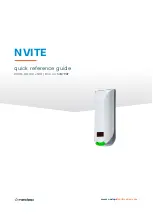
IMAC2B009 V2
Uncontrolled Copy - Refer to Ampcontrol Website for Latest Version
Page 23 of 53
Ampcontrol Pty Ltd
– ABN 28 000 915 542
iMAC System User Manual
iMAC2B009 V4
– 10/18
A
P
P
R
OV
E
D
FOR
E
X
T
E
R
N
A
L
D
IS
TR
IB
U
T
ION
–
P
R
OP
E
R
T
Y
OF
A
M
P
C
ON
TR
OL
P
T
Y
LTD
–
N
O
T
T
O
B
E
R
E
P
R
OD
U
C
E
D
I
N
P
A
R
T
FIELDBUS SIGNALLING PROTOCOL
The iMAC Integrated Monitoring and Control system uses a patented signalling system that utilises a robust
combination of pulse width modulation techniques, together with 20mA current loop signalling.
Figure 5.1: Bipolar Pulse Width Modulated iMAC Fieldbus Signal
The iMAC fieldbus signal uses a bi-polar 18 volt pulse width modulated waveform. This gives the iMAC
signal a very large noise margin and allows the iMAC communication system to tolerate induced noise from
outside sources.
The transmission speed is variable to accommodate the overall resistance and capacitance of the fieldbus.
The iMAC system is not compromised by line capacitance or inductance because of a fixed transmission
baud rate. The transmission speed is selectable so the data throughput can be optimised at commissioning
for the particular system type. All iMAC modules are auto-bauding, automatically adapting to the iMAC2
Controller’s selected baud rate.
Both voltage and current are sampled on module data replies. The Controller calculates the resistance and
stores the value in a database with the module data and other variables including error counts. The loop
resistance to every module provides invaluable maintenance information. The error count on every module
gives the user instant indication of pending problems, which can be rectified during a planned maintenance
shift.
All data points within the iMAC System are 16-bit data words. Each scan is verified with a 16-bit CRC
checksum. Modules are always online and can force exception scans when data changes resulting in
response times as short as 100ms. This structure was chosen to simplify the interface to 16-bit PLCs and
allow analogue and digital data points to be handled in one systematic fashion.
+18V
-18V
0V
















































